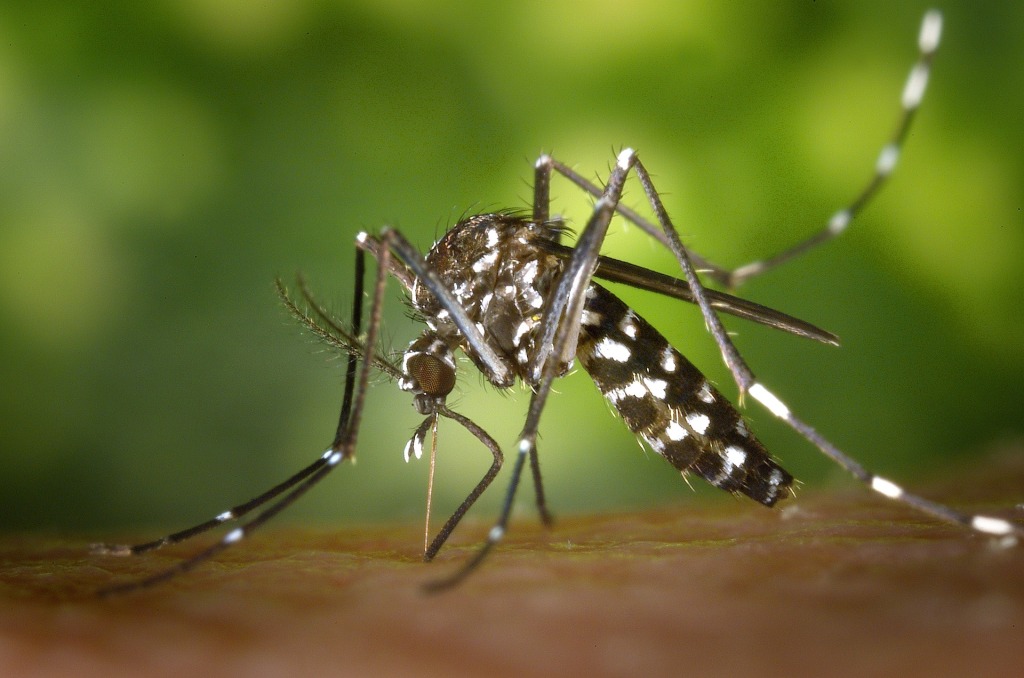Sandra Oliveira discusses new research, conducted with colleagues, that saw the development of a model to predict the possible future spread of the invasive Tiger mosquito.
The Tiger mosquito (Aedes albopictus) is a highly invasive species that, in the last 40 years, has colonized all continents except Antarctica. Why do we need to worry about it? Because this mosquito can carry several viruses and spread diseases such as dengue, Zika or yellow fever.
Originally from the rural areas of Southeast Asia, this species crossed oceans and reached North America in the 1980s, passing through Europe in 1979 and 1990. Since then, the Tiger mosquito has entered almost 100 new countries all over the world.
What drives such successful dissemination?
In the mid-1980s, American researchers evidenced a link between the spread of the species and the international sea trade of used tyres, that can store the dormant eggs of the mosquito. Later on, live Dracaeana plants, called “lucky bamboo”, were also found to be egg deposits used by the species.
Indeed, the potential role of the international trade of these products leading to the spread of the tiger mosquito has been recognized for years. But, measuring it under an analytical framework has been hard – partly because trade data, in a format suitable for research purposes, is not easy to obtain.

During the COVID-19 pandemic, the International Trade Centre provided free access to its database that compiled country-level information regarding traded volumes of different products, including tyres and live plants, with monthly records for about 15 years. We used this opportunity to explore further the role of international trade to the spread of this species, and developed a model to estimate the expected year of arrival of the Tiger mosquito in countries where the species is still absent, based on the patterns and trends of trade relations between countries, combined with distance and climatic data.
To train the model, we first used a sample of 20 countries to which the year of arrival of the species was known and occurred before 2020. We then evaluated the contribution of the 16 predictors included, and if the model was able to estimate the number of years since the entry of the mosquito in those countries with reasonable proximity, checking if its performance varied by type of indicator. Afterwards, the best model obtained was applied to another sample of 22 countries, where the mosquito does not yet exist. This allowed us to estimate when the mosquito is expected to arrive in these countries.
Connection with countries where the mosquito exists matters more than the volume of traded goods
The most notable result was the high importance of the predictors representing the number (and proportion) of countries having the mosquito and from where the goods are imported, which alone explained more than half of the variance of the dependent variable (i.e. number of years since entry of the mosquito in the country). Surprisingly, the predictors representing volume of traded products were much less relevant.

Our estimates tell us that the Tiger mosquito might:
- invade all 22 countries until 2035, even those located in Scandinavia and Eastern Europe
- in the African continent, the species might arrive to Angola, Senegal, Kenya or Zimbabwe within 5 years, the same timeframe found for Peru and Bolivia in South America
- in Baltic countries and Scandinavia in Europe, in countries such as Estonia, Latvia and Finland, the timeframe is between 3 and 9 years
- whereas in eastern Europe, for countries like Poland and Ukraine, the timeframe estimated is longer, over 10 years.
Concluding remarks
Knowing in advance the expected timeframe for the mosquito arrival can help countries plan for surveillance and control strategies, to prevent the dissemination of vector-borne diseases carried by the Tiger mosquito. But despite the awareness brought by the results obtained, the model did not include factors that are likely relevant for the spread of the species.
For example, the influence of dispersal by ground transportation, with cars and trucks carrying mosquito eggs while crossing regional and country borders by road, as previously documented in Croatia and Switzerland, or the constraints to the survival of the species imposed by seasonal climatic conditions, with the harsh winters in Northern Europe possibly hindering the establishment of the species.
In any case, a model that indicates the further spread of this mosquito species throughout Africa, South America and eastern and northern Europe in the next 12 years, calls for the need to continue expanding our knowledge on how to adapt, in a timely manner, our public health policies.
Read the full article “Predicting the time of arrival of the Tiger mosquito (Aedes albopictus) to new countries based on trade patterns of tyres and plants” in Journal of Applied Ecology

